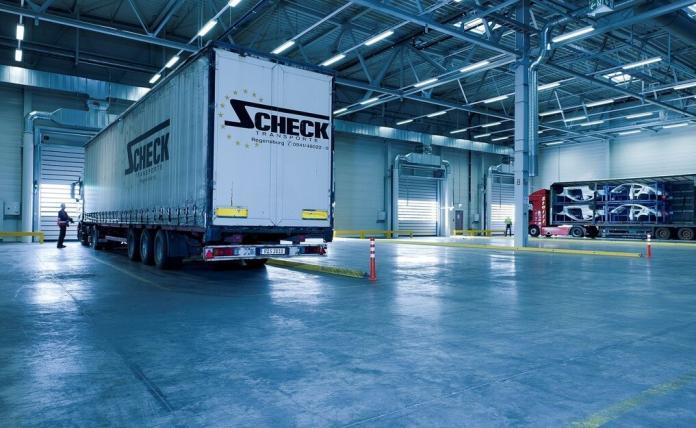As supply chains become increasingly complex, 3PL (third-party logistics) warehousing solutions play an increasingly important role. They offer an array of strategies to improve inventory management efficiency and help companies reduce overhead costs, streamline processes, and improve customer service. They can also provide access to new technologies and systems that help businesses remain competitive and increase their efficiency. In this article, we delve into 12 distinctive ways 3PL warehousing solutions contribute to refining inventory management practices. This ensures businesses operate with precision and agility in an ever-evolving marketplace.
Real-time Visibility
A key benefit of 3PL warehousing solutions is their ability to provide real-time visibility into inventory. The best providers utilize advanced technology and software that offer up-to-the-minute insights into inventory levels. The significance lies in the fact that real-time data empowers businesses to make informed decisions, preventing stockouts or overstock situations that can impact the overall supply chain.
Data Accuracy and Precision
Automated systems in third-party warehouses often use algorithms to quickly process large amounts of data, allowing errors in data entry or order processing to be identified and corrected quickly. This reduction in discrepancies is critical to effective inventory management. These systems also cut costs by decreasing manual input and labor, reducing the risk of human errors, and expediting order processing. The resulting efficiency not only improves customer satisfaction but also leads to significant cost savings.
Demand Forecasting
3PLs often leverage historical data and analytics tools to predict demand trends accurately. This enables businesses to maintain optimal inventory levels by responding to changing market demands promptly. Accurate demand forecasting is instrumental in preventing excess stock or shortages, ultimately improving inventory management. Additionally, accurate demand forecasting helps to identify opportunities for growth and expansion. Most of the time, businesses have access to only their historical data to gather and find insights. However, 3PLs have access to a wealth of data from multiple businesses, which can help them provide more accurate demand forecasts. Additionally, 3PLs often have the expertise and resources to use sophisticated analytics tools to identify trends and patterns that businesses may not be able to see on their own. By leveraging historical data and analytics tools, 3PLs can help businesses improve their inventory management and ensure that they have the right products in the right place at the right time.
Optimized Storage Solutions
Efficient storage solutions are implemented by 3PL providers through the optimization of warehouse layouts and storage methods based on product characteristics. This ensures that products are stored in a manner that enhances accessibility and facilitates faster order fulfillment, contributing to effective inventory management. 3PLs can help businesses optimize their storage solutions by evaluating their current needs and developing a plan that will meet their long-term goals. It can also provide the necessary equipment and staff to implement the new storage solution. By optimizing storage solutions, businesses can improve their inventory management and reduce their costs.
Cycle Counting and Regular Audits
To uphold inventory accuracy, good 3PLs conduct regular cycle counting and audits. It is a process of counting a portion of inventory regularly. Regular checks contribute to maintaining accurate and reliable inventory records to ensure that products are not overstocked or understocked and that products are not lost or misallocated. This helps to ensure that the inventory records are accurate and up-to-date. It also prevents production delays, which can lead to decreased customer satisfaction. This proactive approach helps identify discrepancies early on, preventing costly errors that could impact inventory management.
Cross-Docking for Faster Turnaround
3PLs implement cross-docking strategies to minimize storage time. This method reduces holding costs and ensures that items are delivered to customers more quickly, contributing to effective inventory management. As a result, customer satisfaction and loyalty are improved. Additionally, cross-docking helps to reduce waste, as products are not stored for long periods.
Order Consolidation
Efficient picking and packing processes are achieved through order consolidation by 3PLs. By grouping items for shipment, this strategy minimizes the risk of errors and ensures that orders are processed and fulfilled efficiently, further enhancing inventory management. This can also help to reduce transportation costs, as fewer shipments are required. Order consolidation can also help reduce emissions, as fewer vehicles are needed to transport orders.
Returns Management
An integral part of inventory management is handling returns effectively. 3PLs excel in managing the reverse logistics process, ensuring that returned items are quickly reintegrated into inventory or properly disposed of. This efficient returns management prevents overstock situations and contributes to streamlined inventory processes.
Supplier Collaboration
3PLs facilitate collaboration with suppliers to streamline the replenishment process. Improved communication ensures that inventory is restocked promptly, reducing the likelihood of stockouts and enhancing overall inventory management. This helps to ensure that customer demands are met in a timely and efficient manner. Additionally, improved supplier collaboration can also help to reduce costs associated with supplier fulfillment and inventory management.
Customized Reporting and Analytics
Providing businesses with customized reports and analytics tools is another feature of 3PL warehousing solutions. These tools allow for in-depth analysis of inventory performance, enabling businesses to make data-driven decisions. By leveraging insights, companies can optimize inventory levels and enhance overall supply chain efficiency.
Efficient Order Fulfillment Processes
3PL providers optimize order fulfillment processes by implementing advanced technologies such as automated picking systems and robotics. These technologies streamline the picking and packing of orders, reducing fulfillment times and minimizing the risk of errors. By enhancing order fulfillment efficiency, businesses can meet customer demands promptly, reducing lead times and improving overall inventory management.
Conclusion
The services and technologies provided by 3PL warehousing not only streamline daily operations but also enable businesses to swiftly adapt to market demands. The integration of 3PL solutions is not just an option; it’s a strategic necessity to boost your business. By leveraging 3PL warehousing, businesses gain a comprehensive toolkit for improved inventory management, resulting in enhanced efficiency and cost savings throughout the supply chain.
You may also like,
- Types of Businesses that Need Inventory Management
- Top 6 Warehouse Management Pitfalls and How to Fix Them







